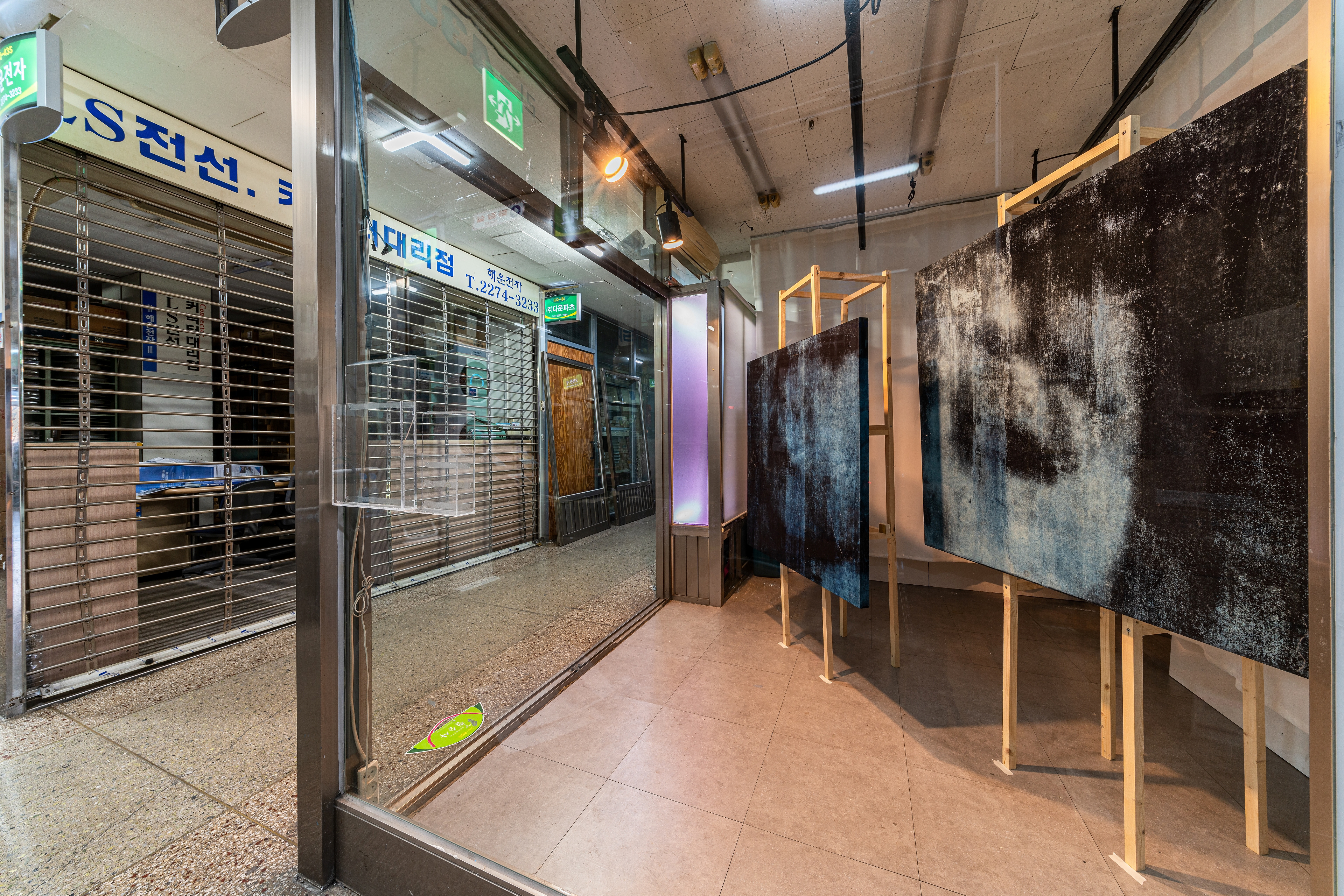
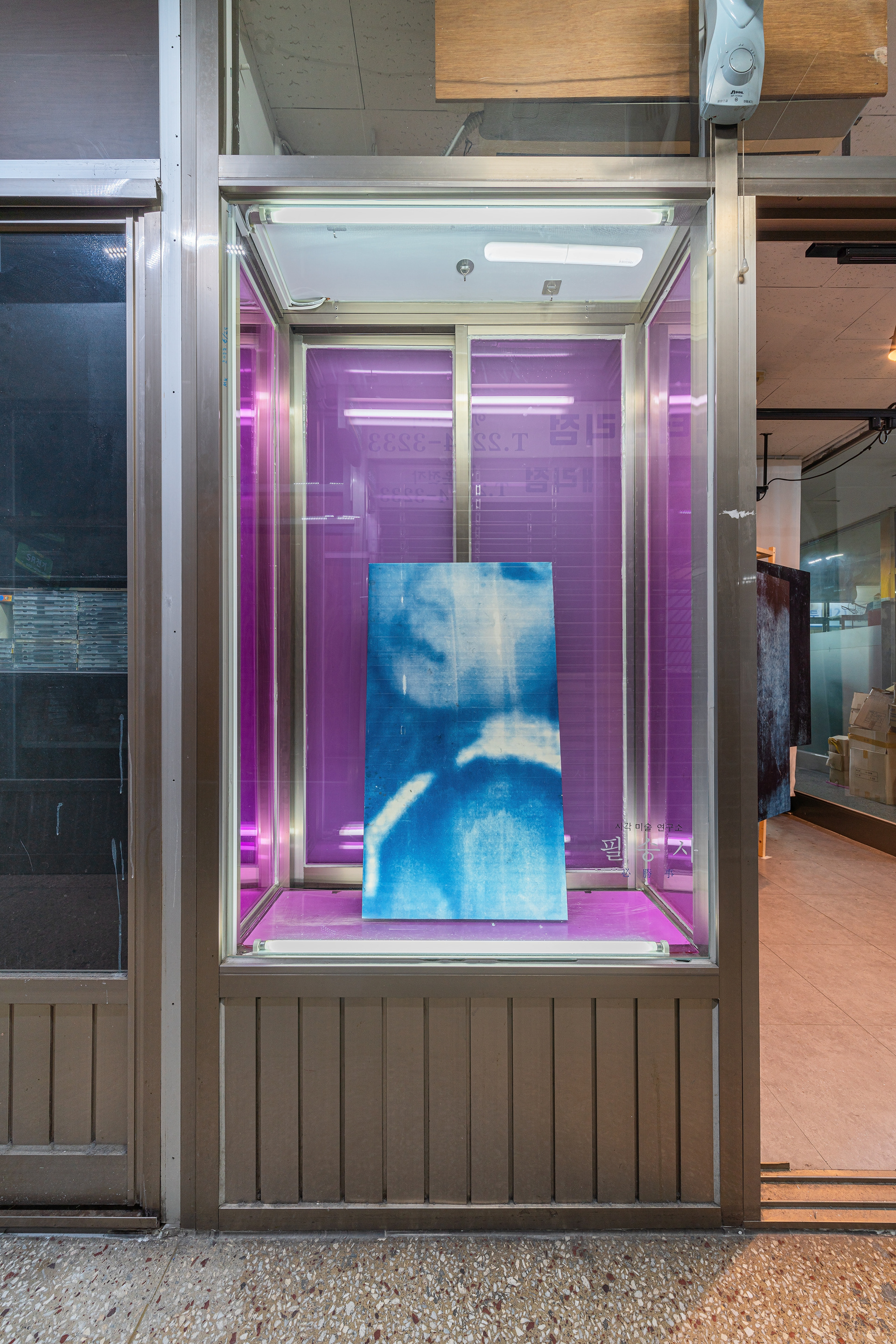
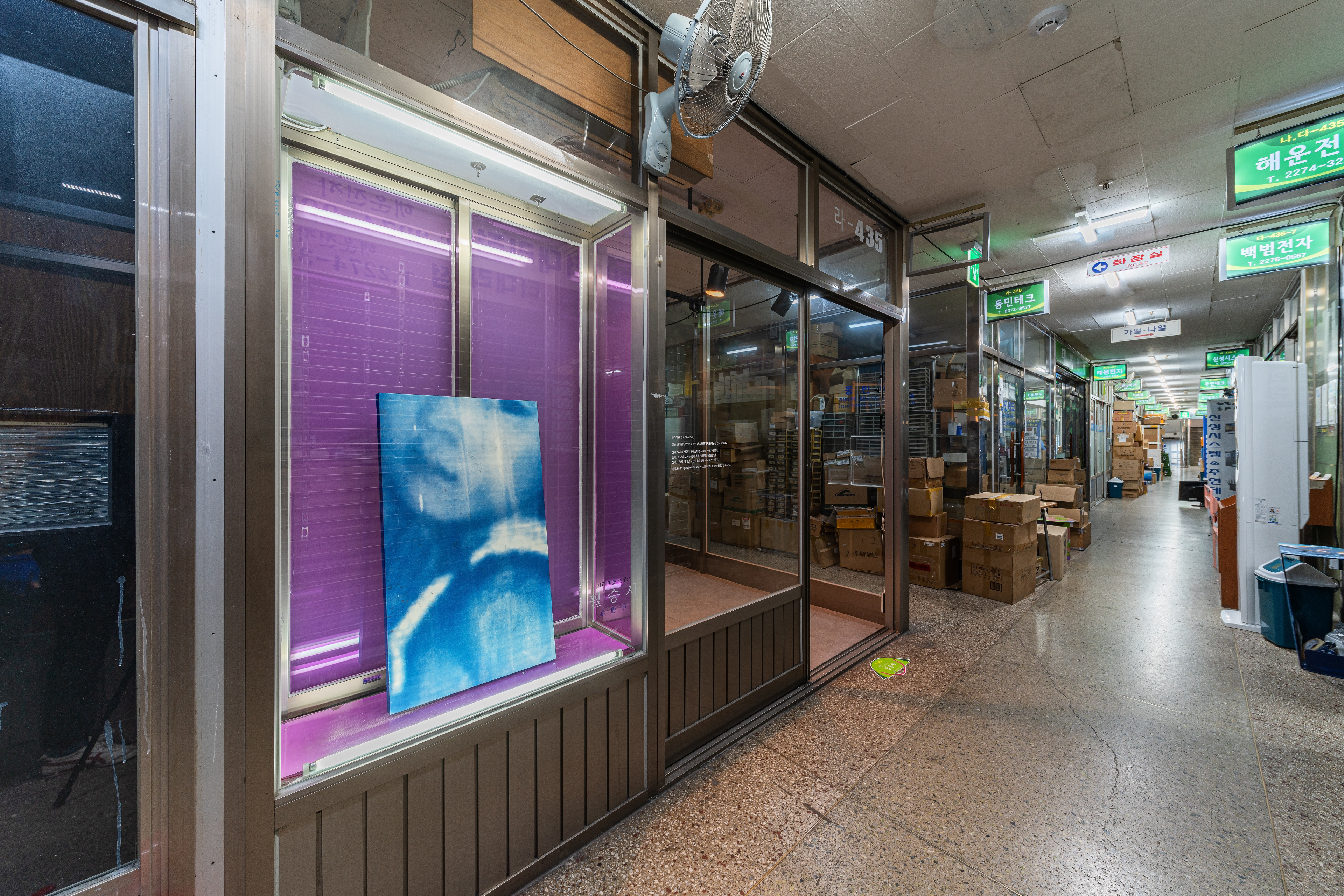


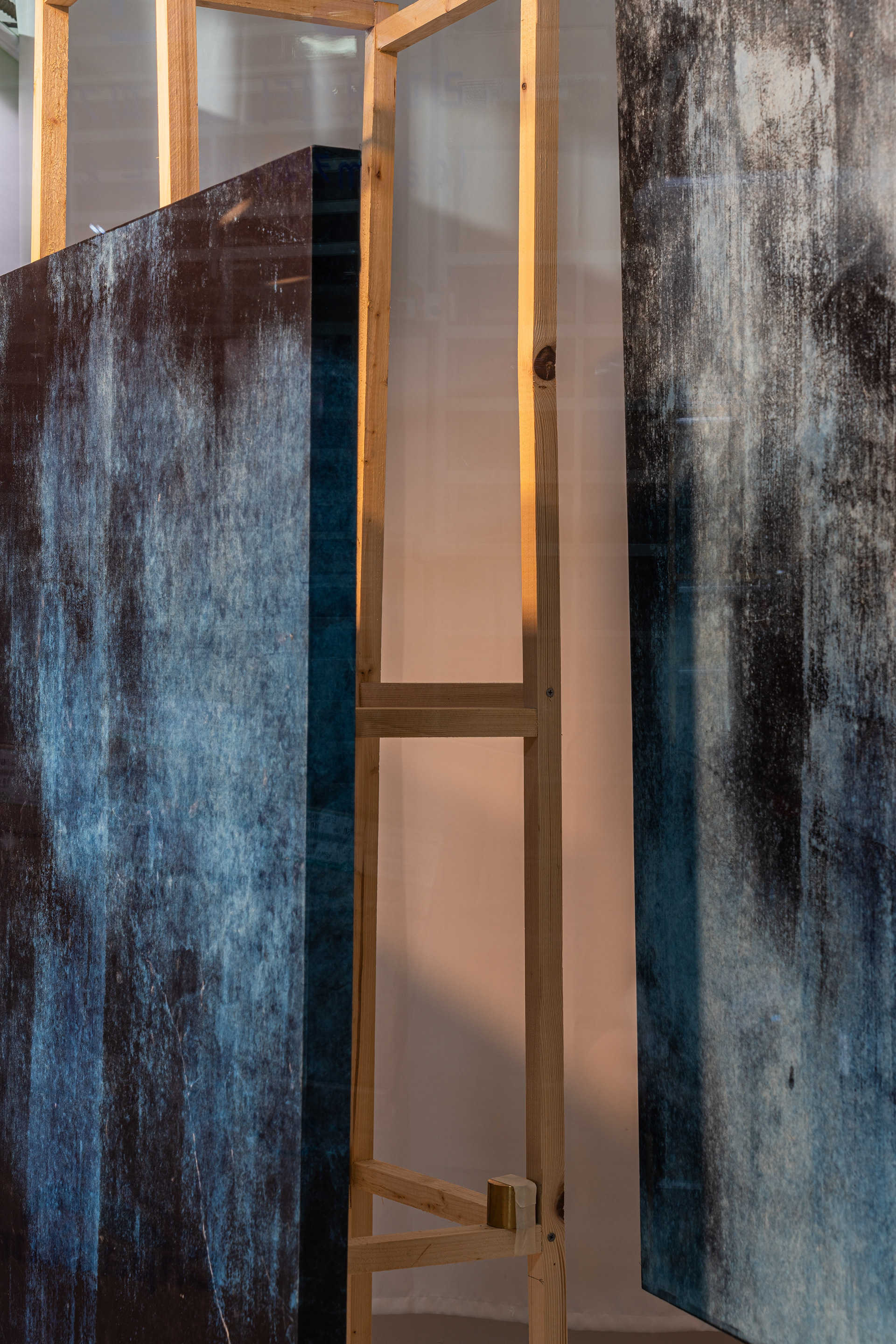
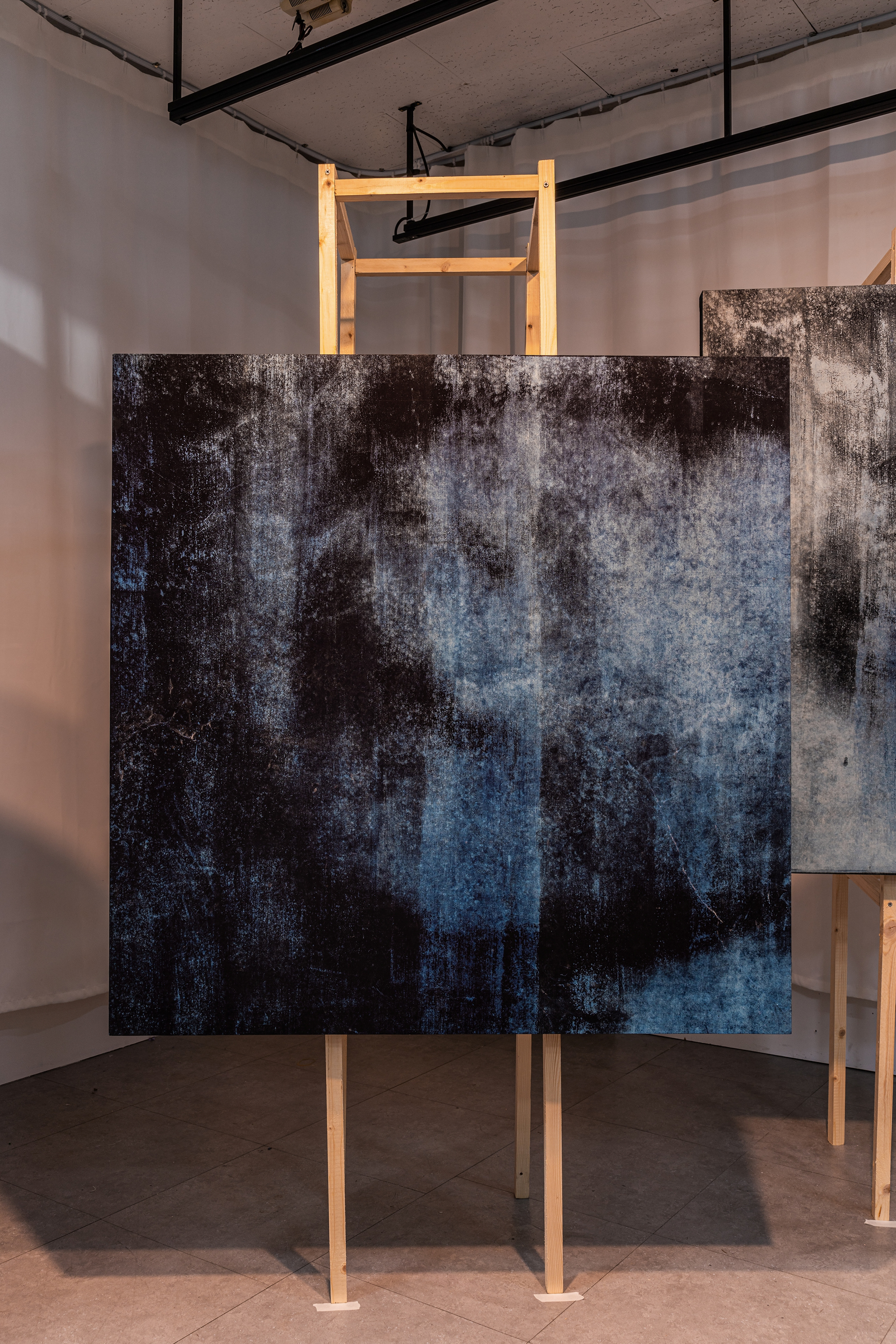

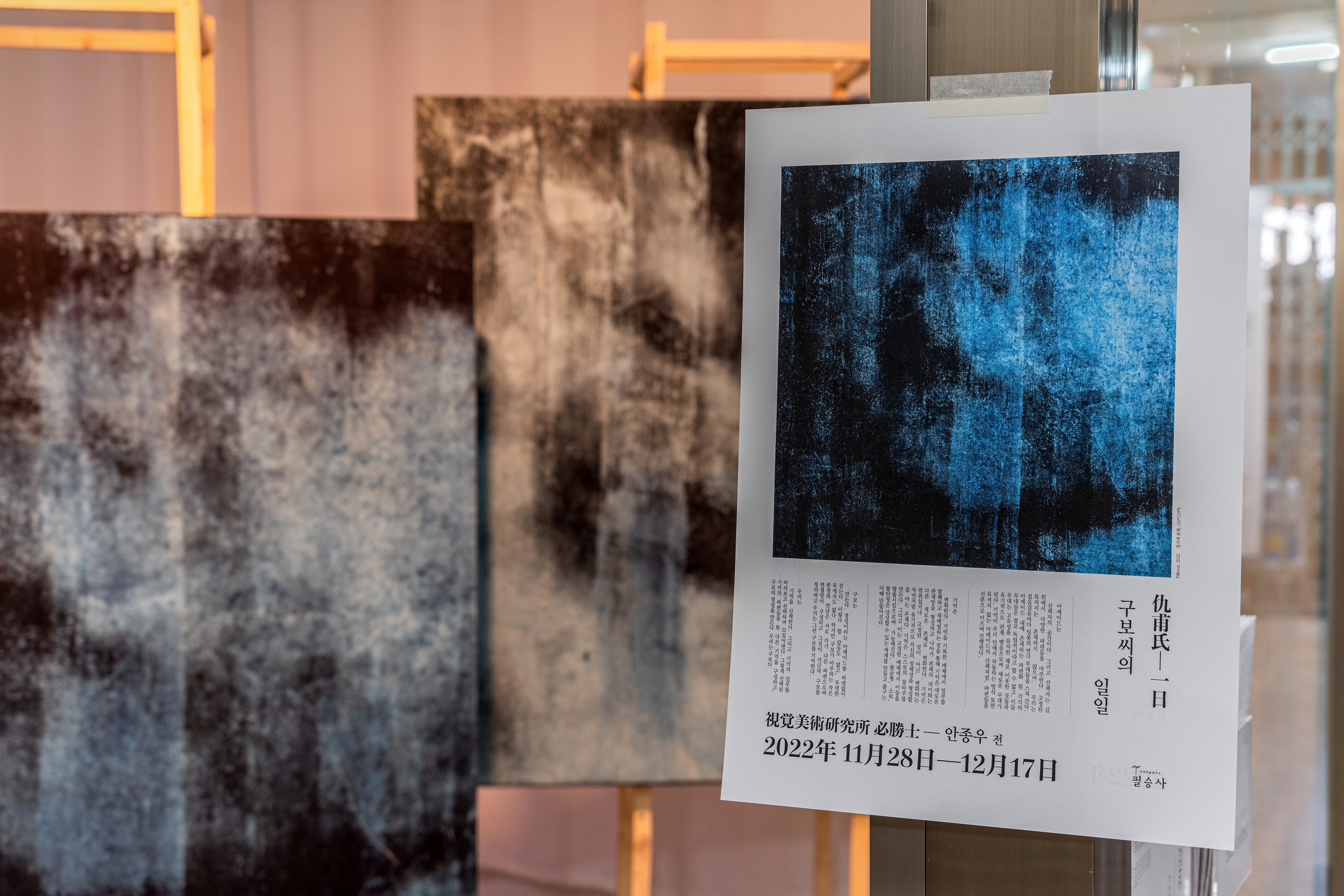
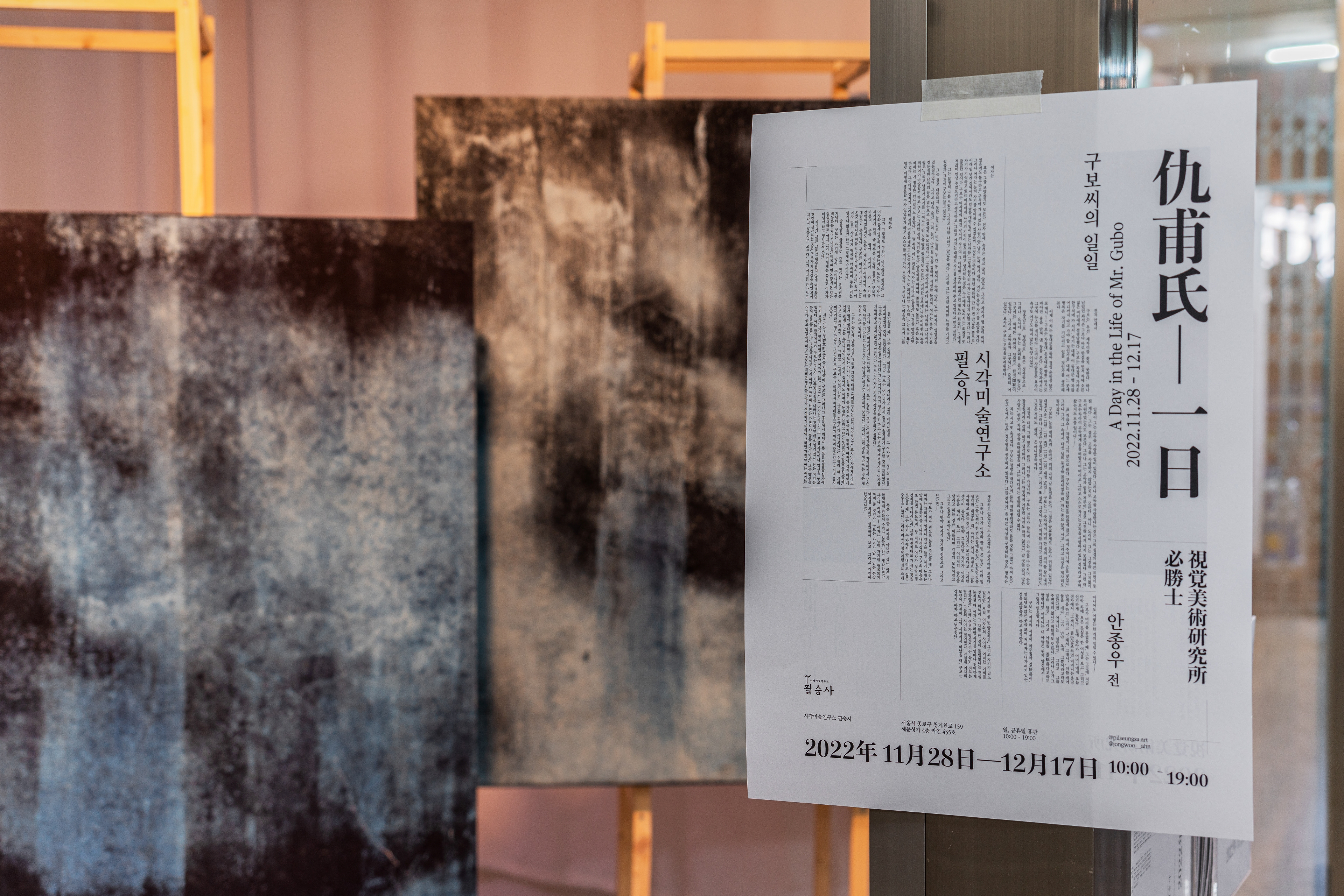

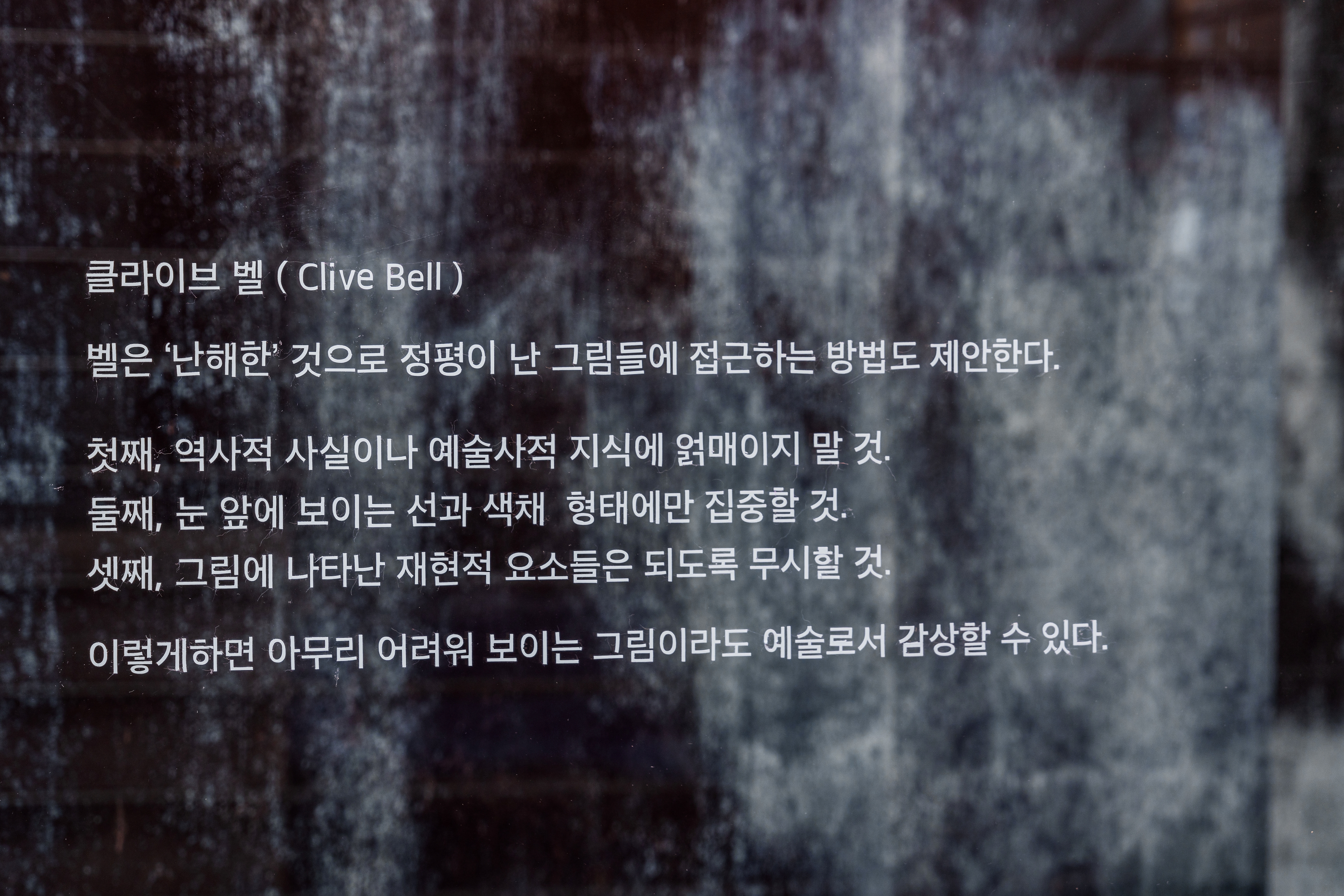
THE ARCADE It is a space for walkers. And the walker faces various fragments on the road. There are no fixed destinations, and with each step we pass through some sort of theatrical stage. Each of the fragmented stages that exist in the arcade can never be said to be independent, and these stages become new stages by forming organic relationships with neighboring ones while maintaining their uniqueness. The way memories work in us also proceeds by connecting fragments with lines, like a walk in an arcade without a destination. MEMORY IS It changes. Through extracting and rearranging some parts from the media that recorded memories, memories form a new network of relationships and furthermore change into new beings different from their original meaning. Memory is not static or fixed, but is a being that knows how to form its own identity organically like the changing nature. Memories make montages of themselves. And this is made possible by escaping them from a fixed medium. Imbalance, alienation, and instability create an imaginable world and exits are created at this time. GUBO walk I walk endlessly through the arcade called Gyeongseong. There is no conflict to speak of, and there is no clear destination. However, the small landscapes and encounters that Kubo faces form a network of different fragments, through which we define Kubo today and we remember such Gubo. WE ARE take a walk in memory Then, look at a part of the memory, select it, and bring it out. The selected fragments compose another memory and make the Gyeongseong of Gubo. That's how we become a canter.











